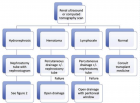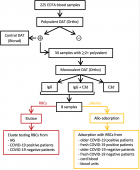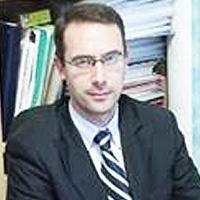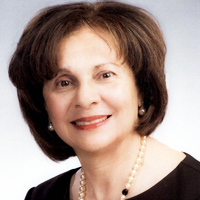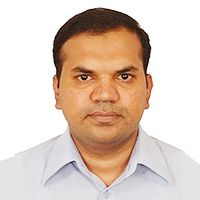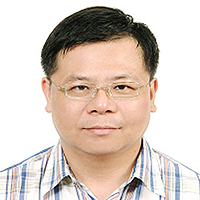About Russian Academy of Science
Russian Academy of Science
Articles by Russian Academy of Science
Associations of Burnout, Secondary Traumatic Stress and Individual Differences among Correctional Psychologists`
Published on: 25th January, 2017
OCLC Number/Unique Identifier: 7286351074
Objective: The aim of the present study was to examine associations between secondary traumatic stress (ST), job burnout (BO) and several psychological variables such as world assumptions and locus of control in correctional psychologists.
Methods: This study utilized information provided by 87 currently prac¬ticing correctional mental health providers (psychologists) in the correctional settings across Russia in St.-Petersburg, Belgorod, Vladimir, Kaluga, Ryazan, etc. The sample included 51 men, 36 women. The mean age of participants was 34.9±6.9 (ranging from 25 to 48 years). Participants reported working a mean of 6.23±3.5 years (ranging from 3 months to 15 years) in a correc¬tional setting. Subjects were assessed with Maslach Burnout Inventory-Human Services Survey (MBI-HSS), Secondary Traumatic Stress Scale (STSS), World Assumption Scale (WAS) and Locus of Control (LC) Scale. Three sets of statistical analysis were provided: ANOVAs between- group comparisons with STS and BO as factors and Spearman correlation analyses.
Results: The results of our study reveal that burnout and secondary traumatic stress in correctional psychologists are significantly positively related and thus may be exacerbated by each other. BO is significantly negatively associated with WAS benevolence scale and the WAS self worth scale and STS is significantly negatively associated with WAS benevolence scale and the WAS meaningfulness scale. However, LC and its components are negatively associated with BO, but not with STS.
Conclusion: The main future direction of our research is to construct nonlinear model of burnout with STS, WA and LC components as predictors, identify its parameters and make its validation.
Sense and antisense Oligodeoxynucleotides to Glun1 Nmdar are Cognitive Enhancers (Nootropics) and protective agents in normal and ischemic (Anoxic) conditions-In vitro study
Published on: 7th July, 2017
OCLC Number/Unique Identifier: 7317653967
Aims: Implication of modified N-methyl-D-aspartate receptors (NMDAR) in synaptic plasticity and learning was investigated in normal and pathological conditions.
Study design: We studied the efficiency of synaptic plasticity, the development of the long-term potentiation/depression (LTP/LTD) in olfactory cortex slices, treated with antisense or sense oligodeoxynucleotides (aODNs and sODNs) to the GluN1 subunit of NMDAR.
Main outcome: aODNs induced the LTD development in slices after high-frequency tetanization. Contrariwise, in sliced treated with sODNs the enhanced LTP developed. Under conditions of severe anoxia (10 min), treatment of slices with aODNs and sODNs contributed to the preservation of synaptic activity which has been blocked in the control untreated slices. In practical implications such directed up- and down regulation of NMDAR might be useful in the readjustment of brain activity by the controlling balance of excitation/inhibition.
Non-force electromagnetic fields
Published on: 9th March, 2020
OCLC Number/Unique Identifier: 8558604059
The non-force magnetic fields were first predicted by Chandrasekhar in 1956 in his well-known published work [1]. Since then there have appeared a large number of theoretical studies [5,6,15,17] with the research into various aspects of physical manifestations of non-force magnetic fields. However by now their existence in the technical physics and in laboratory experiments has not been experimentally confirmed [30]. Nevertheless the indistinct presence on the Earth of such fields was, in a sense, discovered in the natural electromagnetic field much earlier.
Metal-carbon mesocomposites application possibilities as the medicine magnetic transport within an organism
Published on: 11th December, 2020
OCLC Number/Unique Identifier: 8872659069
The paper is dedicated to the consideration of the metal-carbon mesocomposites application possibilities for the medicine magnetic transport. This trend is determined by correspondent peculiarities of content and structure of mesoscopic composites. The main peculiarities of these nanosized particles are the following: a) the presence of unpaired electrons on the carbon shell; b) the structure of carbon shell from poly acetylene and carbine fragments; c) the atomic magnetic moment of inner metal is equaled to more than 1–3 μB. The creation of reactive mesoscopic materials with regulated magnetic characteristics which can find application as medicine magnetic transport within an organism is very topical. The present investigation has fundamental character. It’s based on the ideas concerning to the change of metal-carbon mesocomposites reactivity. The use is possible as metal-carbon mesocomposites both and they are modified analogously.

HSPI: We're glad you're here. Please click "create a new Query" if you are a new visitor to our website and need further information from us.
If you are already a member of our network and need to keep track of any developments regarding a question you have already submitted, click "take me to my Query."











